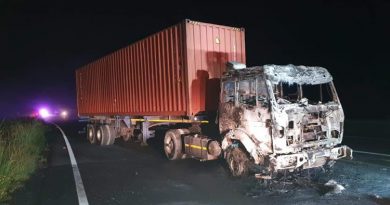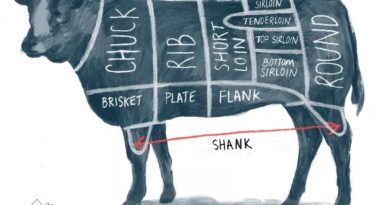Look out for these common chicken diseases
Keeping your poultry operation profitable means ensuring that your chickens are as healthy as they could be. This article provides insight into the different types of chicken diseases farmers need to look out for.
Poultry farmers must prioritise the health and productivity of their chickens, regardless of the size of their operation. The key to preventing disease amongst your chickens is good biosecurity.
Good biosecurity is of utmost importance for the health of chickens and the profitability of the farm. Chickens commonly suffer from a variety of diseases and health conditions. It is vital to understand the different types of diseases and recognise the most common diseases that can affect birds to maintain good flock health.
Categories of chicken diseases
Chicken diseases can be categorised as either infectious, parasitic, nutritional or metabolic, or behavioural, depending on what causes the disease. Infectious diseases tend to be the most common as they spread easily amongst the chickens.
Infectious diseases can be caused by bacteria, viruses, or fungi and can affect the respiratory, nervous, reproductive, or immune systems of chickens. Chickens showing symptoms of infectious diseases should be quarantined and treated as soon as possible to protect the rest of the flock. When chickens suffer from parasitic diseases, the parasites can be found living on or inside them. Parasites are often found in certain environmental conditions, says Engels, or they can be contracted from other infected birds.
Common parasites on poultry farms include lice, mites, ticks, roundworms, and fleas. The presence of parasites can be indicated by irritation, feather damage, anaemia, or parasites that can be found in the faeces of chickens. Birds should be inspected monthly and bird housing should be kept clean to prevent parasitic diseases.
Nutritional or metabolic disease is triggered by unhealthy living environments where chickens are subject to inadequate feed, poor nutrition, and insufficient exercise. Affected birds can have soft bones and beaks and show signs of lameness or perform poorly. The majority of these diseases can be treated with proper nutrition and the correct feeding programme, but these symptoms may also be indicative of another underlying disease.
Lastly, behavioural diseases are caused by birds that are overly stressed and these birds act out in numerous ways. Symptoms include aggression, pecking at feathers and other birds, eating of eggs and cannibalism. These problems should be prevented before they start by ensuring that birds have adequate nutrition, proper stocking densities, correct temperature control, and that good flock health is maintained.
Most common viral diseases
Fowl pox
A highly contagious viral disease that can present in either a wet or dry form in chickens. The dry form presents as painful, wart-like lesions on unfeathered areas of the chicken (primarily legs, feet, combs, and wattles). The wet form affects the upper gastrointestinal and respiratory tract of the chickens and can cause lesions in the mouth, oesophagus, and trachea. Egg production will decrease in laying hens and young birds will experience stunted growth. There is no treatment for fowl pox, but it can be prevented by vaccinating all chickens by the wing web method with a commercially available fowl pox vaccine between 12 and 16 weeks of age. It is also important to control mosquitoes in chicken housing, as they can spread the disease from flock to flock.
Avian influenza
Caused by Type-A orthomyxoviruses, this virus is spread by wild aquatic birds that affect domesticated chickens. Symptoms in chickens include diarrhoea, coughing and sneezing, nasal discharge, purple discoloration and oedema in the wattles and comb, swelling, ruffled feathers, and sudden death. Once it spreads, avian influenza is deadly, and all affected birds will have to be culled and their carcasses destroyed. Therefore, farmers should take the utmost care with biosecurity practices to prevent the disease from entering the farm.
Infectious bronchitis
This is a viral disease that can travel through the air. It is characterised by coughing, sneezing, and mucous discharge from the nasal passage and eyes, as well as decreased egg production and feed consumption. Chickens can be treated with antibiotics for a few days to treat any secondary infections, but the best option is prevention by vaccinating against infectious bronchitis and enforcing good biosecurity procedures.
Newcastle disease
This virus is a respiratory disease that is carried by wild birds. Affected chickens may present with nasal discharge, respiratory problems, murky eyes, decreased egg production, twisted necks, and paralysis in the legs and wings. There are various strains of Newcastle disease, some of which are more lethal than others. Older birds will frequently recover and not be carriers, but younger birds tend to die from the disease. There is no treatment, but vaccinations are available.
Coccidiosis
Coccidiosis is a disease caused by the Coccidian protozoa parasite. The parasite lives inside the chicken’s gut wall and causes damage. Chickens are infected by consuming coccidia from the environment. The coccidia cause destruction of intestinal epithelial cells, resulting in watery or bloody diarrhoea, ruffled feathers, decreased feed consumption, and consequently weight loss due to an inability to absorb nutrients.
Coccidiosis is most common in chickens that are kept on the floor in a barn or chickens in free-range systems. The condition can be treated with antibiotics, but as with any disease, prevention is better than cure, and prevention, in this case, is by vaccinating or by adding a coccidiostat to the feed.
Conclusion
To prevent disease and health problems amongst your flock, farmers need to follow the basics: Maintaining good biosecurity, ensuring proper nutrition, exercising good management practices, and following a thorough vaccination programme.
(Meadow Feeds)



